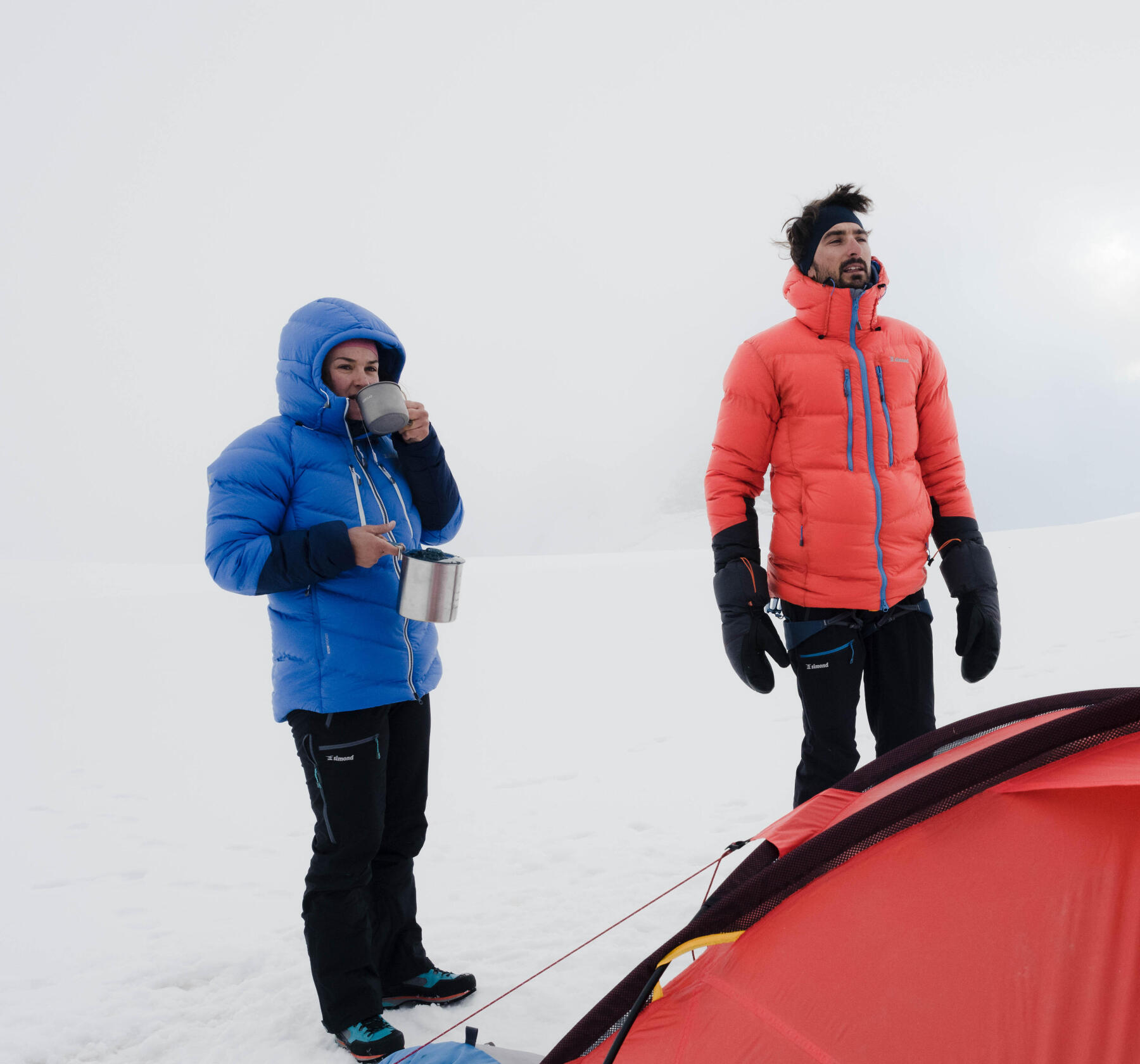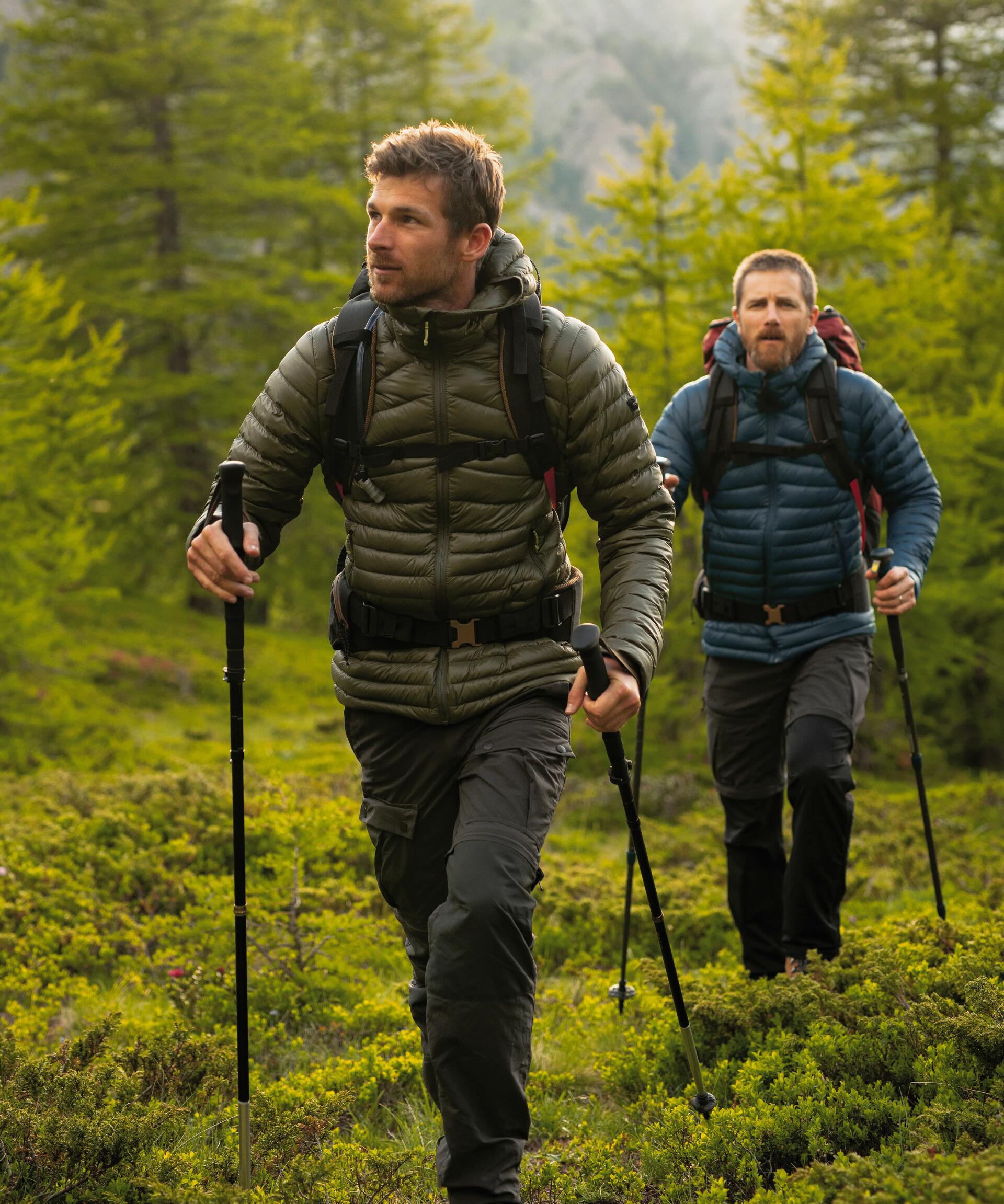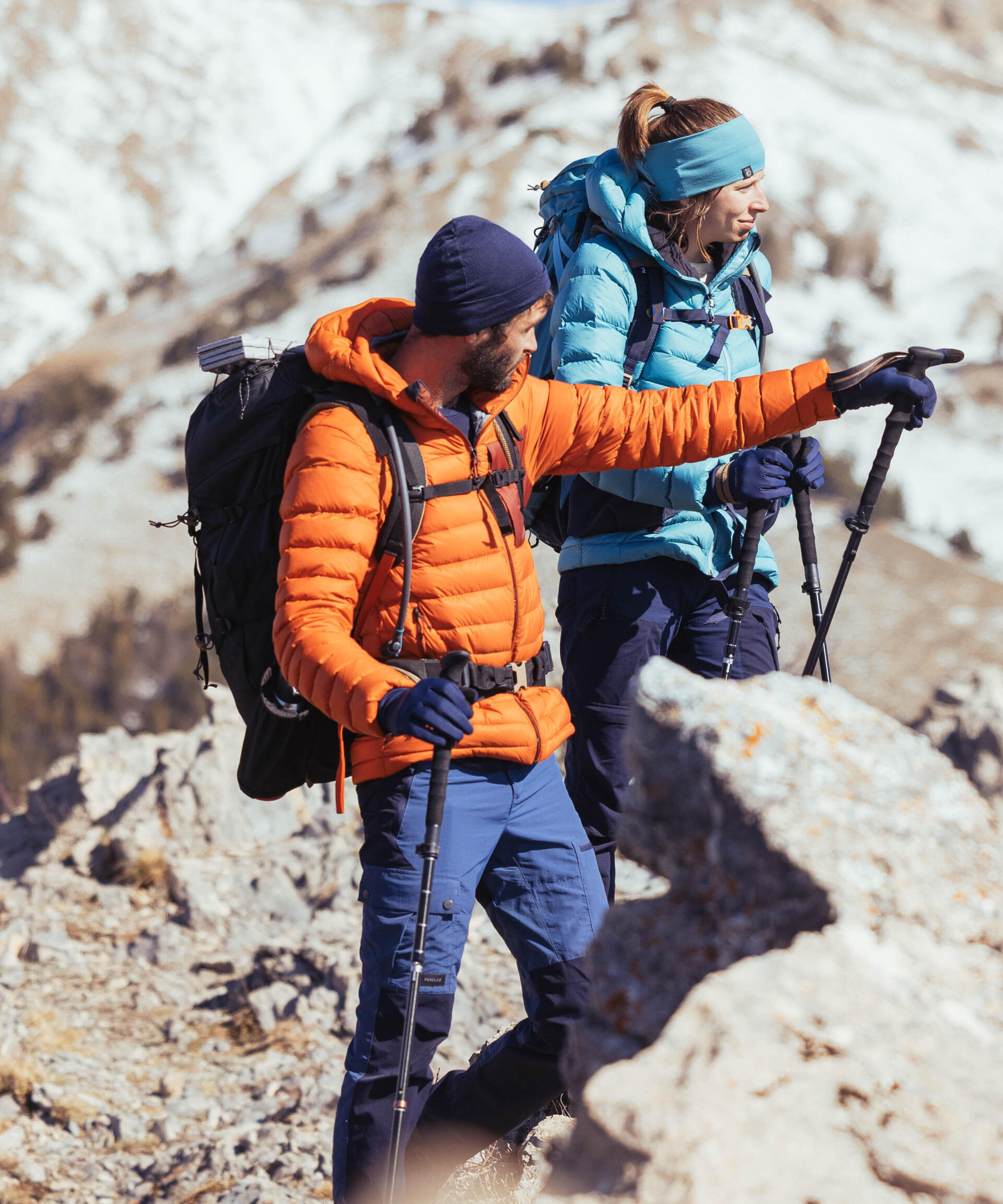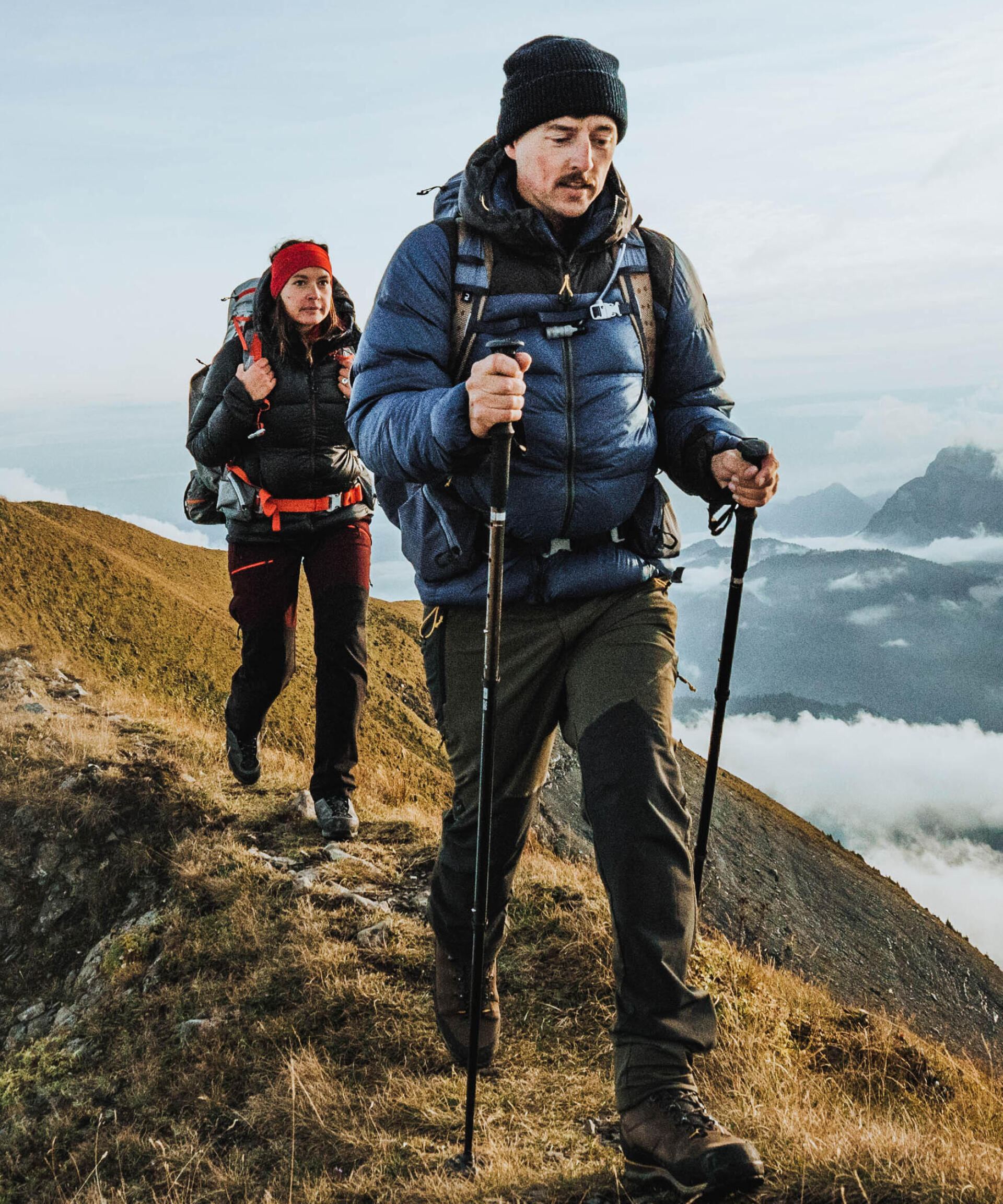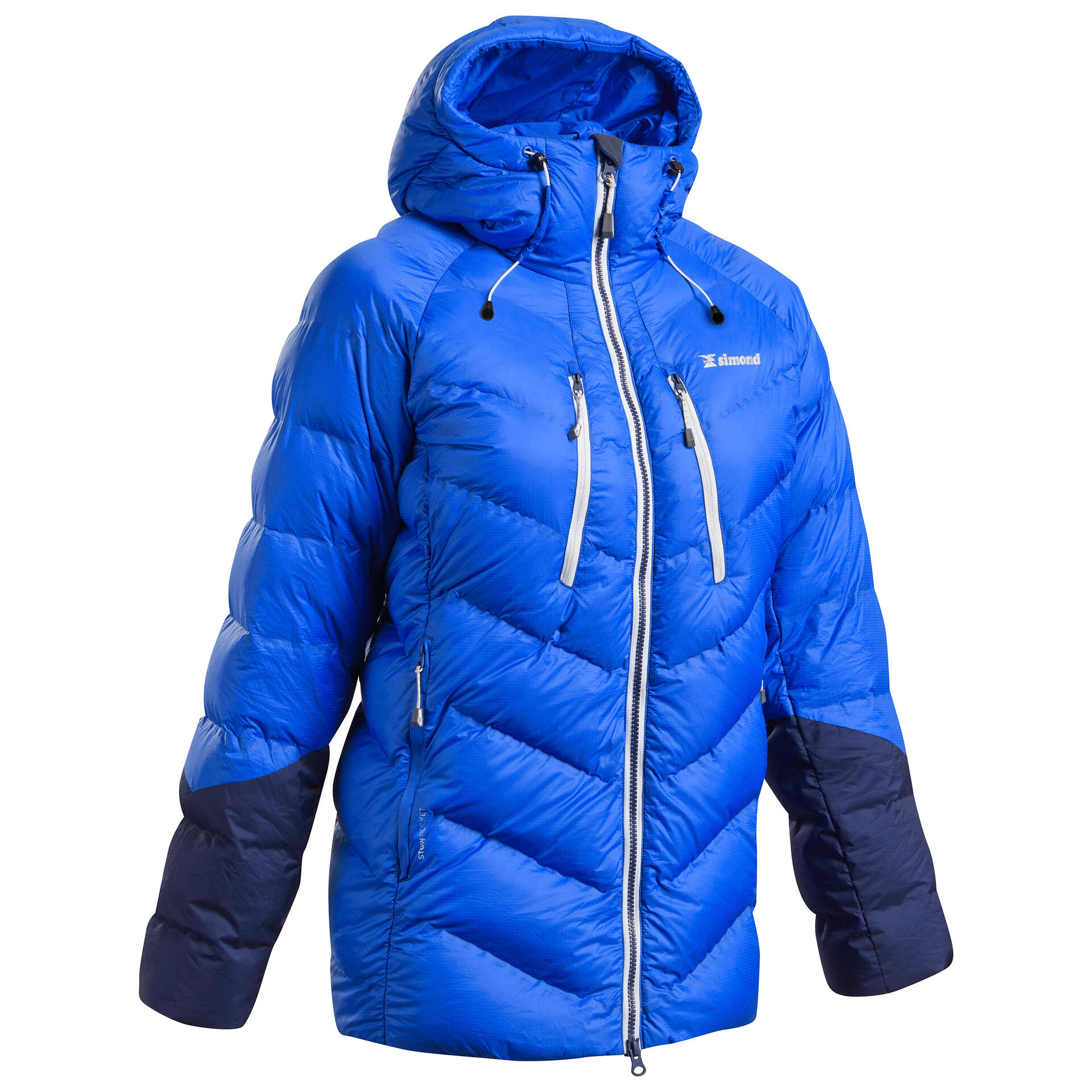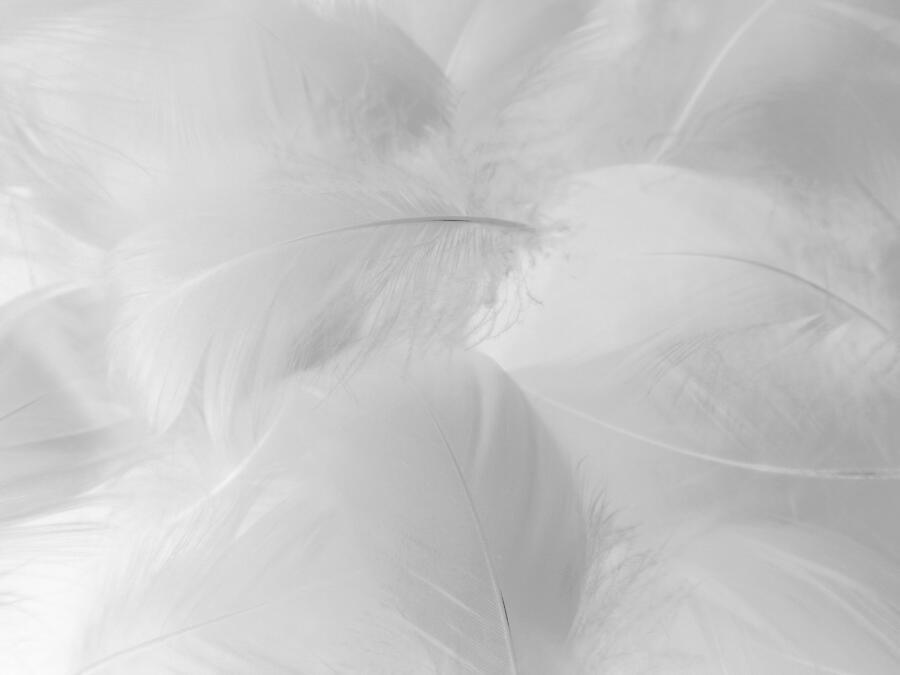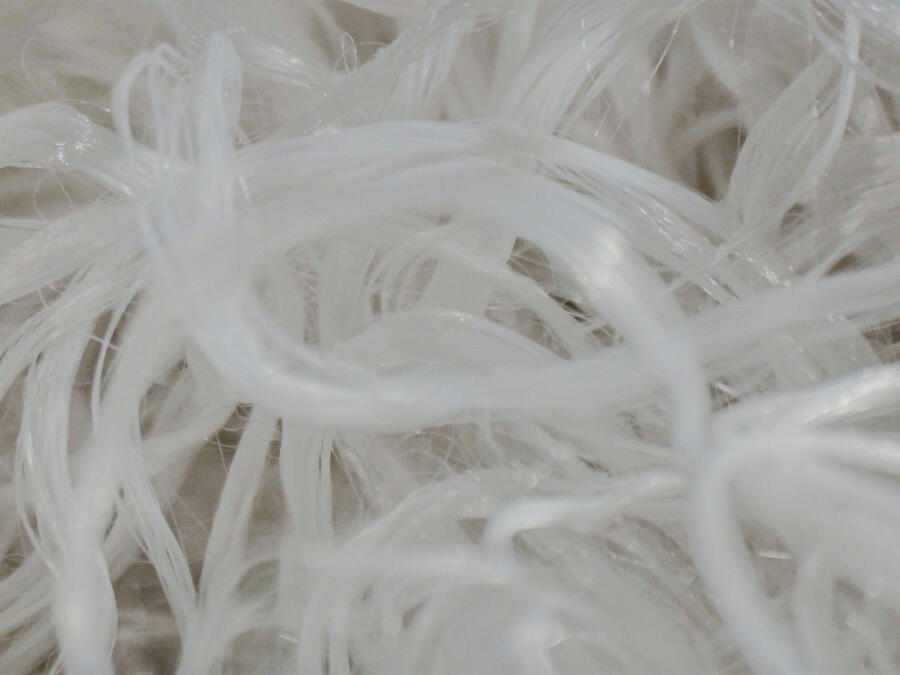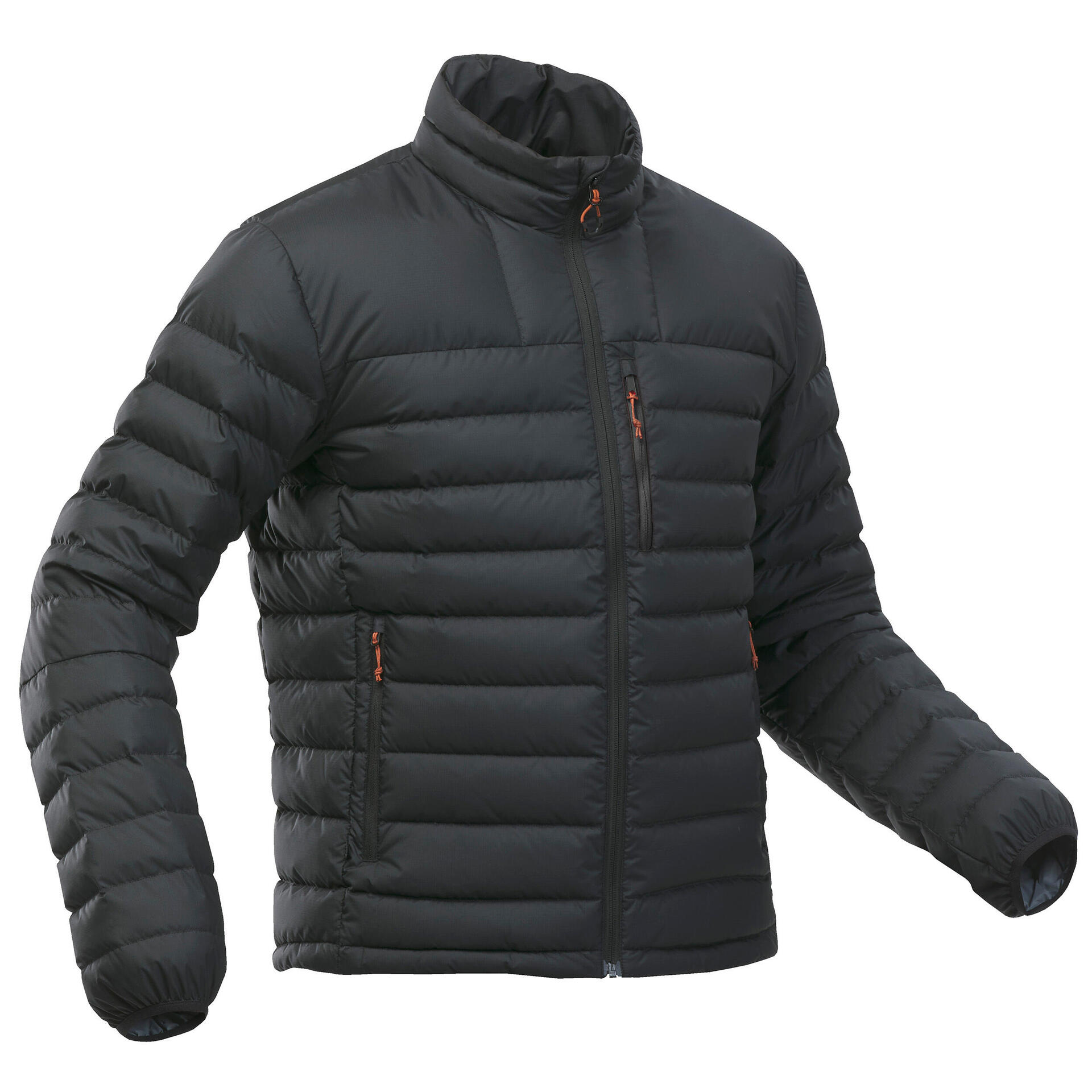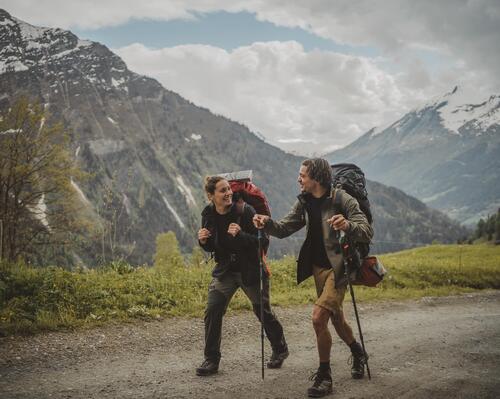Why wear a padded jacket? A good combination of low weight, low bulk and warmth.
A padded jacket is almost indispensable in winter, but also for your mountain outings.
In the 3-layer system, the padded jacket is sometimes considered as a second layer, the one that offers good thermal insulation, but it is very often used as a third layer on top of a technical t-shirt and a fleece for example. If adopting the 4-layer system, in extreme conditions, the padded jacket is worn as a 3rd layer, over a technical T-shirt and fleece, and under a hiking jacket.
The padded jacket has several features that make it very attractive. A padded jacket is a lightweight, compact garment which also has excellent thermal properties. Both these aspects are particularly valued by hikers who often look for lightweight equipment as well as trekkers who favour compact garments which they can easily fit in their backpacks. In the rest of this article, we'll see that there are various models of padded jackets: synthetic or down padding, with or with hoods, and with or without sleeves.





